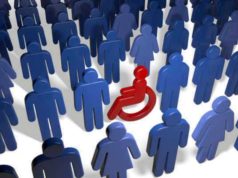
What is the Community Living Assistance Services and Supports Act (CLASS Act)?
The Community Living Assistance Services and Supports Act is an element of Health Care Reform that became law on March 23, 2010. The CLASS act establishes a voluntary insurance program where if an individual will require home living assistance as the result of an injury or disability. The intention is to create a program that allows individuals with disabilities to avoid nursing homes and placing an undue burden on the healthcare system through assisted living in their own private residences. The CLASS act is intended to be low cost public health insurance alternative to private insurers.
Why is the CLASS program necessary?
This program is included as a part of healthcare reform to deal with the possibility of rising costs associated with assisted living as the Baby Boomer generation reaches retirement age. There are 11 million people in the United States relying on assisted living with half under the age of 65. This program aims to reduce dependence on Medicaid through a voluntary payroll deduction-funded insurance program. The benefits offered under CLASS are much less that the benefits of private insurance so individuals that can afford the private option should do so.
Who administers the CLASS program?
The CLASS program falls under the auspices of the Secretary of Health and Human services who will determine the benefit structure, operating rules and establish premiums. Assisting the secretary will be a Board of Trustees and the Independence Advisory Council. The trustees are responsible for assessing the solvency of the program. Therefore, they will consult with the Chief Actuary of the Centers for Medicare and Medicaid Services to confirm the accuracy of their fiscal projections. The advisory Council will formulate policy and regulation of the program in regards to its long term prospects. Should the program every appear to be insolvent for a period of less than twenty years, then it is the responsibility of the administrators to report that to Congress. After the premiums have been accounted for, the Treasury will pay the collected premiums into the program.
When does the CLASS program take effect?
The CLASS program came into effect on January 1, 2011 with the definition of benefits and enrollment beginning in October 2012. Until then, many provisions such as monthly premiums are not certain.
How will the CLASS program be financed?
The primary method to finance CLASS is through payroll deductions from participating employers. These deductions are voluntary and alternatively, an individual may participate in CLASS through direct payments. The CLASS program is not funded by taxpayers and the monthly payments are determined against a measure of 75 years of program solvency with regard to the accumulated premiums paid by program participants. There will be different pricing schemes with older members paying more and students or those in poverty paying around $5 a month.
How does one receive benefits under CLASS?
To receive cash benefits from the CLASS program, the individual must pay into CLASS for at least five years (vesting), maintaining employment for at least three of those years. Yet to be defined eligibility criteria will determine the amount of the benefit, to be used to purchase home health care, adult day care, assistive technology home modifications, personal assistance services, respite care, accessible transportation and homemaker services. The benefits can be paid to a family member if that family member the caregiver, so as to compensate that individual for services rendered to the CLASS member.
There will be a set of daily activities that could be potentially affected by cognitive or physical impairment, such as bathing or dressing oneself. It the individual cannot perform a combination of these daily activities, then, he or she will be eligible to collect CLASS benefits, provided the benefits have vested.
Additionally, although the intention of the Community Living Assistance Services and Supports Act is to prevent the individual from have to enter a nursing home, those CLASS program participants that live in nursing homes can use the CLASS benefit to offset the costs associated with living in those residences. Members of CLASS that are institutionalized will have 95% of their benefit go towards maintaining their care and will be able to keep the remaining 5%.
How will payments under CLASS work?
Once an individual becomes eligible for CLASS benefits, benefits ranging from 50 to 75 dollars a day, depending on the disability will be deposited in a debit account on a to be determined weekly or biweekly basis. The amounts will roll over from month to month, but not year to year. After the individual’s condition has improved or died, the account will terminate, with remaining funds returning to the CLASS program. Unlike other forms of prescriptions, CLASS does not adjust benefits or premiums based on pre-existing conditions. CLASS payments can be used for any non-medical care that is essential for the recipient to maintain an independent lifestyle.
What is the relationship to Medicaid?
CLASS is meant to be complimentary to Medicaid and other entitlement programs. In instances where the patient is eligible for both programs, CLASS will offset costs sustained by Medicaid, increasing the spending allowance for the Medicare funds as CLASS will be the primary payer. In some cases have CLASS benefits will eliminate the need for the patient to rely on Medicaid benefits, thus freeing up the resources for more needy individuals. As mentioned before, CLASS helps to pay nursing home costs and may make assisted living facilities a secondary option rather than the primary option for an individual needing care. In most scenarios, Medicaid spending is reduced owing to the fact that the patient’s treatment has become cheaper and does not require the full amount of Medicaid funds that would have been allocated.
Can I enroll in CLASS?
The benefits of the CLASS program will be announced by the Secretary of Health and Human Services in October 2012. Until then it is best to asses private options and determine if what is already known about the provisions of CLASS will be beneficial to you in the event of disability.
Source:
https://www.healthcare.gov/blog/2011/09/class09282011a.html
https://www.whitehouse.gov/health-care-meeting/proposal/titleviii







































